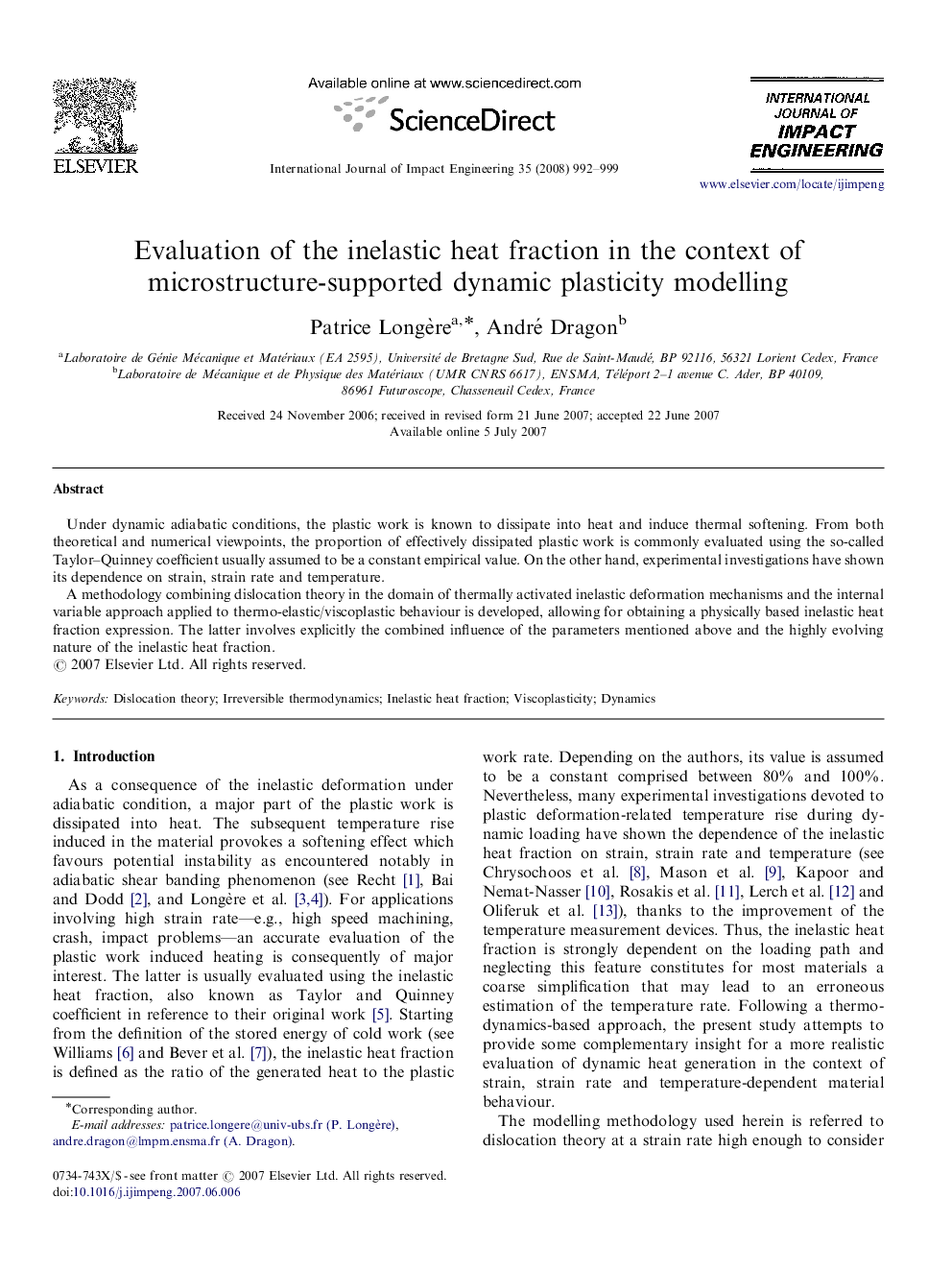| Article ID | Journal | Published Year | Pages | File Type |
|---|---|---|---|---|
| 779742 | International Journal of Impact Engineering | 2008 | 8 Pages |
Under dynamic adiabatic conditions, the plastic work is known to dissipate into heat and induce thermal softening. From both theoretical and numerical viewpoints, the proportion of effectively dissipated plastic work is commonly evaluated using the so-called Taylor–Quinney coefficient usually assumed to be a constant empirical value. On the other hand, experimental investigations have shown its dependence on strain, strain rate and temperature.A methodology combining dislocation theory in the domain of thermally activated inelastic deformation mechanisms and the internal variable approach applied to thermo-elastic/viscoplastic behaviour is developed, allowing for obtaining a physically based inelastic heat fraction expression. The latter involves explicitly the combined influence of the parameters mentioned above and the highly evolving nature of the inelastic heat fraction.
